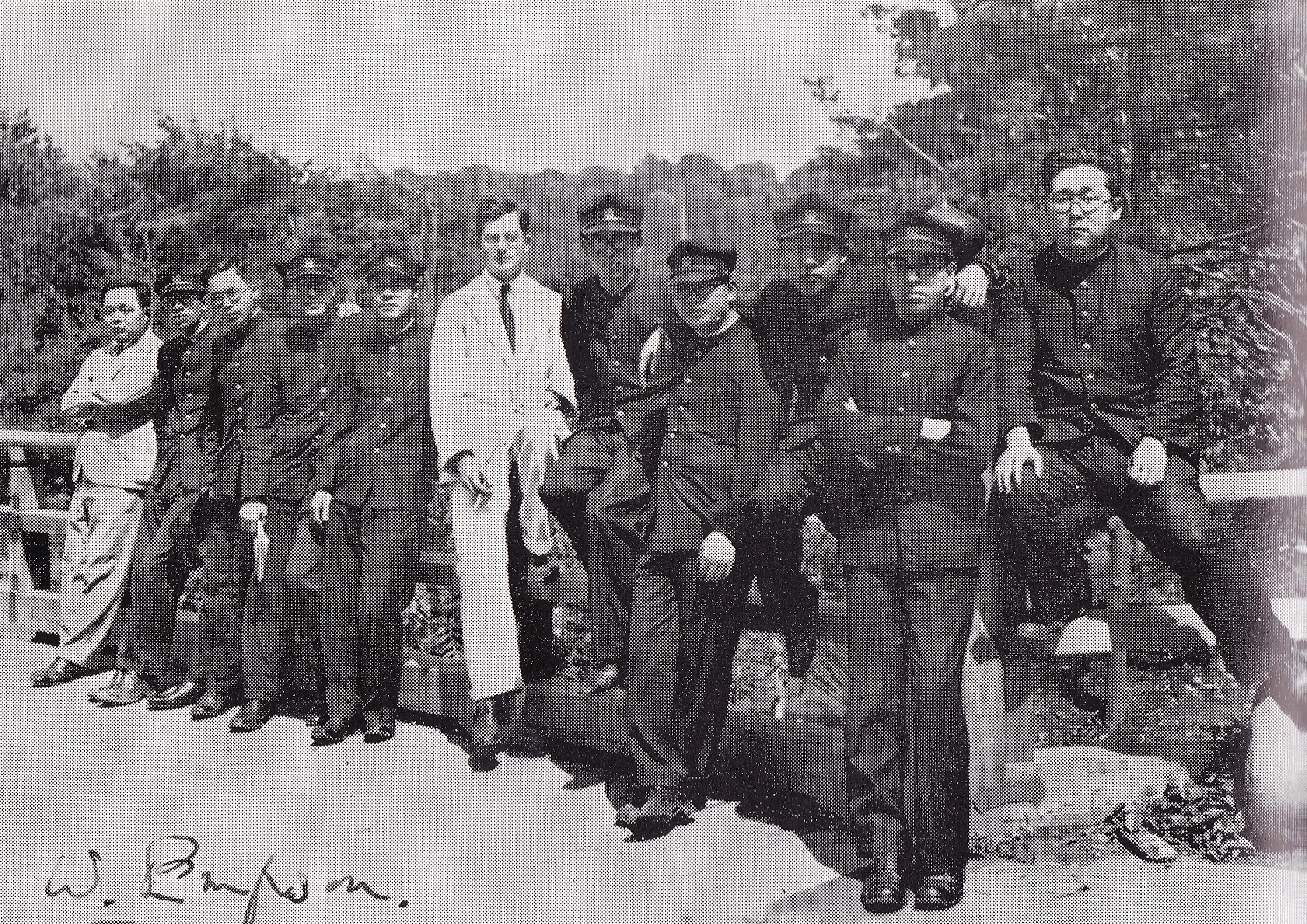About the Website

William Empson with Tokyo Bunrika University students, probably 1932, at Senshuen (占春園), a garden in modern day Bunkyō-ku, Tokyo, then part of the grounds of Bunrika University, Empson's colleague and friend Fukuhara Rintarō far left. We are grateful to Kenkyūsha for permission to reproduce the image from Fukuhara's collected writings, 『英文学評論』/『福原麟太郎著作集』10 (東京:研究社, 1969). (Image sourced by David Ewick/Kano Takeda)
This trilingual, open-access bibliography catalogs works by William Empson published in China and Japan, Chinese and Japanese translations of Empson's works, reminiscences about Empson published in Chinese and Japanese, as well as critical studies and reviews of Empson published in China and Japan during Empson's lifetime through to more recent works of the twenty-first century. Chinese-language dissertations and theses on Empson and deemed significant by public funding bodies have also been included.
As far as possible, research teams based in Tokyo, Wuhan, and Hong Kong sought to correct errors of omission and commission found in earlier hard-copy formats. Electronic databases containing corroborating material were accessed via the National Diet Library of Japan, the Japanese National Institute of Informatics, the National Library of China, the China Knowledge Resource Integrated Database and Duxiu Academic Search.
Despite credible advances in cataloguing practice, establishing a complete bibliography of Empson's work as produced by Japanese and Chinese sources remains challenging. Any attempt to verify actionable entries coming into and out of Japanese and Chinese was plagued by what we often referred to as the "ghost entry" problem, i.e. the difficulty prevailing in much of the writing in English on Empson, which persistently cites titles of Japanese- and Chinese-language publications only in English translation. Erroneous on its face, this cart-before-horse practice is further confounded by the paradox of a perfectly sufficient word-for-word back translation (i.e. from English back into some working approximation of an absent Chinese or Japanese source) corresponding to a nonexistent and hence inaccessible work.
Given difficulties of this nature, and insofar as this bibliography is to remain useful and current, we accept that it will need to be corrected from time to time by other specialists. To that end, the end-user interface for this "Asian Empson" website, housed on a public-access server, has built-in capacity for the ad hoc updating of current entries and the crowd-sourcing of newly discovered entries which, once moderated and verified, may be posted on-line in support of a living and expanding archive.
Finally, a stipulated output of the project has been the coding of all entries, across all three languages, into standard Dublin Core Schema. Readable by OPAC interfaces, DCS coding permits access for international librarians seeking to source bibliographic data on Empson for users anywhere in the world. International scholars and students unfamiliar with DCS, or Japanese and Chinese, may nevertheless have recourse to an “English-friendly” file also found on this site, in MSWord format, which cross-references English-language data with “other language” data elements in Chinese and Japanese. The trilingual "English-friendly" file should provide a basic entry point for the non-specialist who, ideally seconded by a reliably proficient reader of Chinese or Japanese, can find his or her way forward into the Asian bibliography of William Empson's works as a basis for further study and research.